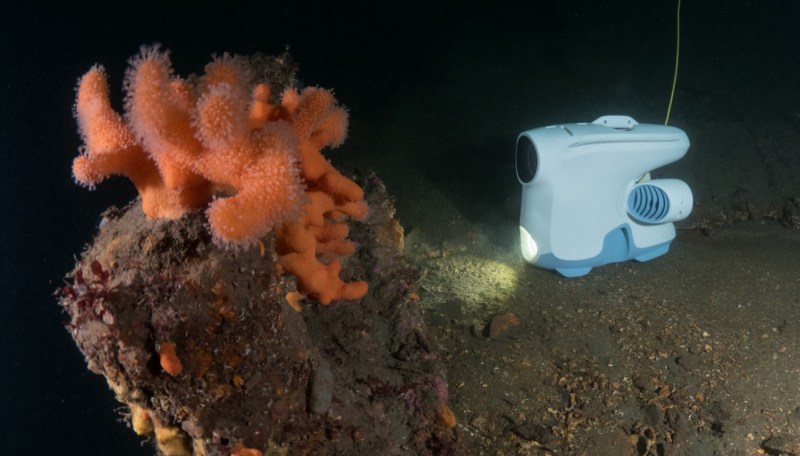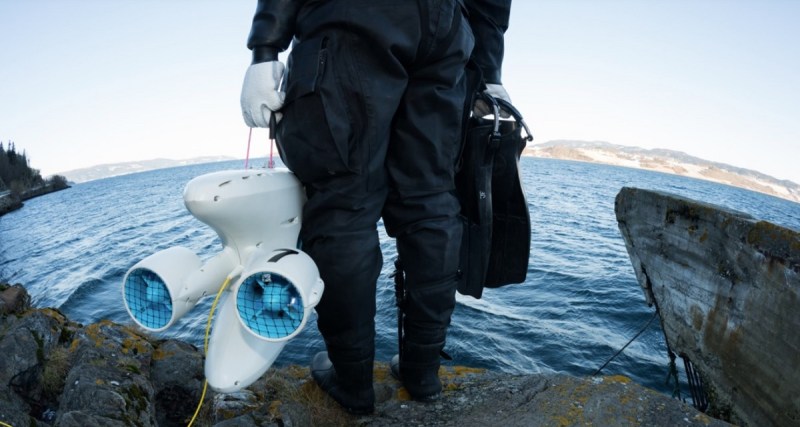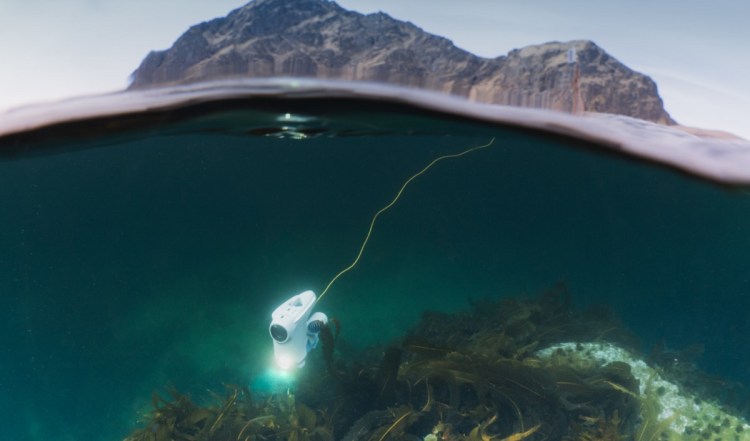Now you can search for sunken treasure remotely. Blueye Robotics is announcing that it is creating an underwater drone that consumers can navigate to as deep as 150 meters under the ocean surface — about eight times deeper than divers can normally go.
The Blueye Pioneer will be made to appeal to professional underwater drone operators and scientists, but it will also target consumers who just want to see what’s under the sea. The company is aiming to launch a $3,500 product in the first half of 2018.
Founded by Christine Spiten and Erik Dyrkoren, the Trondheim, Norway-based company is creating a drone that can withstand the enormous ocean pressures that exist at 150 meters, which is far deeper than the typical 30 meters that scuba divers can reach. They’re mounting a high-definition camera on the drone.

Above: Blueye Pioneer can go to 150 meters under the ocean.
The ocean is the Earth’s last frontier, with less than 10 percent of the ocean floor being mapped, Spiten said. There isn’t really another way for non-scientists to get a view of the ocean except by using a remote drone, since daylight disappears around 60 meters under the surface of the ocean.
June 5th: The AI Audit in NYC
Join us next week in NYC to engage with top executive leaders, delving into strategies for auditing AI models to ensure fairness, optimal performance, and ethical compliance across diverse organizations. Secure your attendance for this exclusive invite-only event.
“We are offering for the first time in history the ability to see what’s down there,” Dyrkoren said. “It’s quite challenging to go that deep. It’s not just a toy. Mechanically, it is a very advanced piece of equipment.”
Previous drones used by filmmakers, oceanographers, and the military cost $20,000 or more. Blueye Pioneer has an HD wide-angle video camera that uses special technologies that work in low-light conditions and can communicate true-color images, overcoming the way colors change underwater. Spiten, cofounder and strategy director, said that below 16 feet, red colors start to fade and the whole image becomes green or blue. Blueye Robotics has created an algorithm to add the color back to photos and video captured by Pioneer.
“You can go treasure hunting, or see strange fish and look for shipwrecks,” Dyrkoren said. “This part of the world has been inaccessible and hidden.”
Developed in the extreme temperatures of the Arctic Ocean, Blueye Pioneer has a hydrodynamic balancing design that helps it operate in rough currents and low temperatures. The 15-pound drone has three thrusters to help it maneuver. It travels at a speed of 2.5 meters/second (five knots).

Above: Blueye Pioneer has a tether that lets you transmit ocean floor videos in real time.
Blueye Robotics has 16 employees in Norway and Palo Alto, California. It developed its color filter design and control signal algorithms in collaboration with the Norwegian University of Science and Technology’s Centre for Autonomous Marine Operations and Systems (NTNU AMOS).
The live video transmitted by Blueye Pioneer travels through a thin cable to a surface buoy and then wirelessly to the user, who can stay dry and safe on a nearby vessel or onshore. The robot has powerful light-emitting diode (LED) lights below the camera, as well as fittings for an extra payload, with replaceable batteries that can last at least two hours. Pioneer is controlled from a smartphone, tablet, or PC.
Scientists may use Pioneer for environmental monitoring, and fish farmers, owners of offshore wind farms, and other ocean-based enterprises can also utilize the drone’s capabilities to stay in control of their underwater operations. Early customers include The Norwegian Society for Search and Rescue, Redningsselskapet, and the World Wildlife Fund Norway.
The company has been raising money, including grants from the Norwegian government.
“We are passionate about technology and the ocean,” Spiten said. “We want to discover the beauty and the history of the ocean. We know so little about it.”

